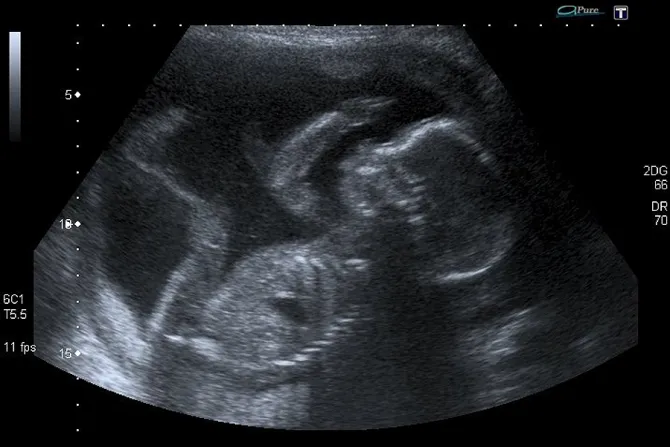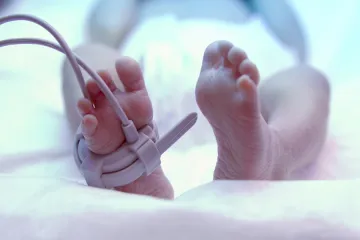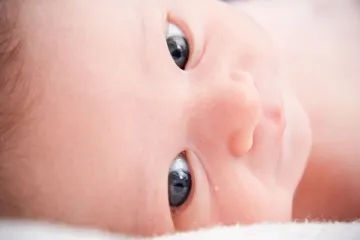s-Hertogenbosch, Netherlands, Oct 20, 2019 / 15:01 pm
A university in the Netherlands has been awarded a $3.3 million grant for the development of a working prototype of an artificial womb that will closely resemble biological conditions and aid in the development of premature babies.
The Horizon 2020 EU program awarded the grant to researchers at Eindhoven University of Technology in the Netherlands for their continued development of the artificial wombs, in which the baby will be immersed in fluids and will receive oxygen and nutrients via an artificial placenta attached to their umbilical cord, The Guardian reported.
These wombs differ from previous models of artificial wombs in that they more closely resemble the actual biological environment of a real womb, the researchers have said. A photograph in the Guardian of an artist's rendition of what the artificial wombs could look like shows large red suspended balloon-like structures, with several intravenous tubes connected to them.
Guid Oei, a professor at Eindhoven and a gynecologist, told The Guardian that current protocols for premature babies deliver oxygen and nutrients directly to yet-underdeveloped organs, putting them at risk for damage.
"When we put the lungs back underwater then they can develop, they can mature, but the baby will receive the oxygen by the umbilical cord, just like in the natural womb," he said, according to The Guardian.
An artificial womb would allow the child to continue to develop in an environment that closely mimics a real womb, Oei added, including environmental factors such as a replication of the mother's heartbeat.
"When they are in this environment, they just feel, and see, and smell, and hear the same sounds as when they are in the womb of the mother," he told The Guardian.
Typically, human babies are considered premature if they are born before the 37th week of pregnancy. Normal pregnancies last for about 40 weeks. Babies born on or before the 25th week of pregnancy are considered particularly at risk for complications and death.
According to USA Today, the earliest premature baby ever recorded to survive outside of the womb, born in San Antonio, Texas, turned 3 years old in 2017 and at the time was a "healthy toddler."
Researchers hope to have the first-of-its-kind artificial womb ready for real-world use within five years.
Artificial wombs called "biobags" were successfully used on premature lambs by researchers at Children's Hospital of Philadelphia in 2017. After roughly a month inside the fluid-filled bags, the premature lambs had continued developing normally as if they had been in their natural womb.
Elizabeth Chloe Romanis, a lawyer at the University of Manchester, told The Guardian that artificial wombs raise ethical questions that should be thought through before their debut in clinics and their use on human babies.
"The law treats fetuses and babies very differently, so how does the subject of the artificial womb fit in? Is it possible to turn off the artificial womb, and in what circumstances?" she told The Guardian.
"It is clear that the legal and ethical issues emerging from the technology must be talked about now, in advance of the artificial womb becoming a reality," she added.
Because they are not yet used in real-world clinics, there is little information available on the ethics of an artificial womb from a Catholic perspective. Guiding principles for Catholic morality regarding reproductive problems include not separating the sexual act from the reproductive act, and respect for the human dignity of both the parents and the child. For example, under these principles, in vitro fertilization and surrogate pregnancies are morally impermissible.
In 2014, Fr. Tadeusz Pacholczyk, Ph.D., director of education for the National Catholic Bioethics Center, told CNA that in the case of a woman who had successfully given birth after a womb transplant, the procedure was licit by Catholic principles and "would be analogous to a situation where a kidney fails to function," and a donor provides a healthy organ to someone in need.
(Story continues below)
The womb was donated by a woman who was past her reproductive years, and the pregnancy resulted from the recipient's own ovaries. Had the womb been donated with a contraceptive mentality on the part of the donor (such as donating a functioning womb during childbearing years in order to avoid conception), or had the pregnancy resulted from the use of the donor's ovaries instead of from the birth mother's ovaries, the procedure would be considered problematic from a Catholic perspective, the priest noted.
But in the case at hand, "by donating the uterus she (the donor) is not compromising her reproductive function nor is she compromising any significant hormonal function," he said.
According to a 2010 article by David T. Reiber on artificial wombs, published in The National Catholic Bioethics Quarterly, "the most obvious benefit of (artificial wombs) would be the ability to save the lives of babies born at extremely early gestational ages, and as I have stated, the technology would be morally permissible when used for this purpose."
However, he added, the technology also raises important ethical questions, including "if a miscarriage, or spontaneous abortion, were to occur because of profound fetal anomaly, would it be appropriate to use AWT to attempt to rescue the fetus, or should the child be allowed to die as perhaps God intended? If AWT actually functions as it is imagined, would it be ethical to use it to bring to term a severely disabled child who would not have survived without it?"
Other considerations would include whether it would be moral to transfer a premature baby to an artificial womb for corrective, but not life-saving, surgery, or to transfer multiples from the natural womb in order to give them a better womb environment and to prevent complications.
Potential abuses of artificial womb technology, Reiber stated, would include women who want to deliver early for convenience or comforts' sake, or if employers would force women to deliver early and use artificial wombs in order to allow them to come back to work earlier than if they had given birth naturally.





